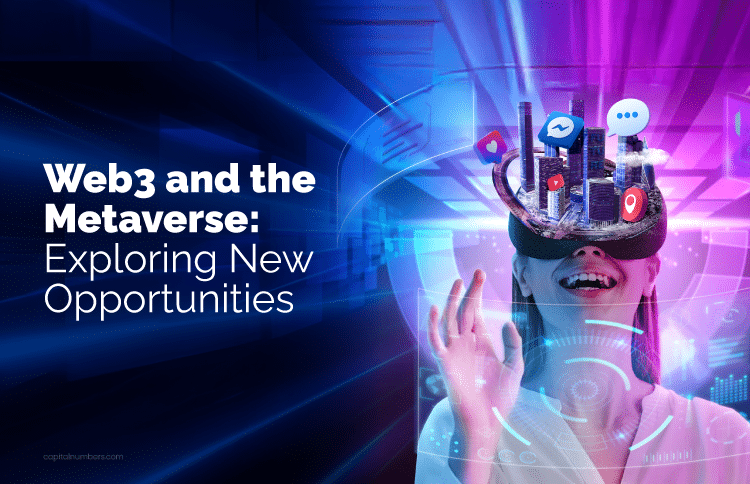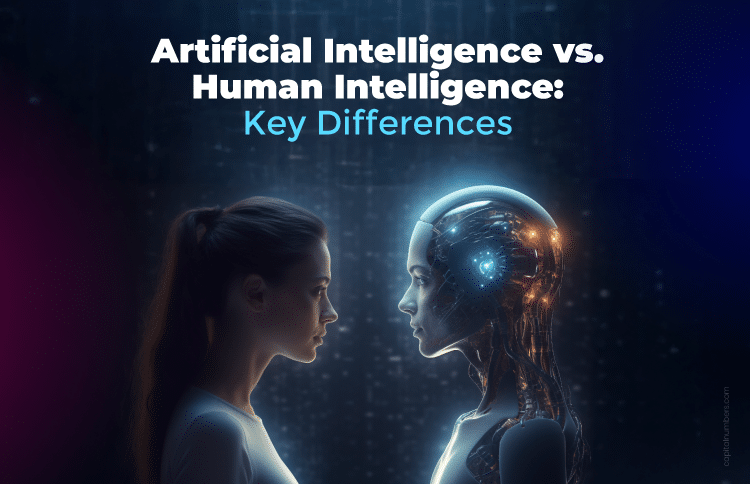Web3 and the Metaverse: Exploring New Opportunities
Table of Contents
The internet is evolving—again. From the static pages of Web1 to the interactive, social platforms of Web2, we’re now on the cusp of Web3, a decentralized, user-empowered digital frontier. Alongside it emerges the Metaverse, a collective virtual space blending reality and imagination. Together, Web3 and the Metaverse promise to redefine how we interact, work, play, and even own things in the digital age. But what exactly are these concepts, and what opportunities do they unlock? Let’s dive in.
What is Web3?
Web3 isn’t just a buzzword; it’s a paradigm shift. At its core, Web3 is the next iteration of the internet, built on blockchain technology, decentralization, and user sovereignty. Unlike Web2, where tech giants like Google, Meta, and Amazon control vast swathes of data and infrastructure, Web3 aims to put power back in the hands of individuals.
Imagine a web where you—not a corporation—own your data, identity, and digital assets. Blockchain, the decentralized ledger technology behind cryptocurrencies like Bitcoin and Ethereum, makes this possible. Smart contracts (self-executing agreements coded on the blockchain) eliminate middlemen, while tokens and NFTs (non-fungible tokens) create new ways to represent ownership and value. Web3 is about trustlessness—not in a cynical sense, but in a system where trust is baked into the code, not reliant on centralized authorities.
What is the Metaverse?
The Metaverse, on the other hand, is a shared, immersive virtual world—or rather, a network of worlds—where people can live, work, and play. Think of it as the internet in 3D, accessible through virtual reality (VR), augmented reality (AR), or even your everyday screen. Popularized by science fiction (like Neal Stephenson’s Snow Crash) and gaming platforms (like Fortnite and Roblox), the Metaverse is no longer a distant dream—it’s taking shape now.
Companies like Meta are betting on it, envisioning a future where we wear VR headsets to attend meetings or hang out with friends across the globe. But the Metaverse isn’t owned by any one entity; in its truest form, it’s a decentralized ecosystem powered by technologies like Web3. Together, these two forces are creating a digital revolution brimming with opportunities.
The Intersection of Web3 and the Metaverse
So, how do Web3 and the Metaverse fit together? Web3 provides the infrastructure—decentralized, secure, and user-centric—while the Metaverse offers the experience: a boundless, immersive playground. Picture this: in a Web3-powered Metaverse, you could own a virtual house as an NFT, trade digital art with cryptocurrency, or attend a concert where your ticket is a blockchain-verified token. Your digital identity, tied to a wallet rather than a corporate profile, follows you seamlessly across platforms.
This synergy unlocks a host of opportunities, from new economic models to creative expression and social interaction. Let’s explore some of the most exciting possibilities.
Economic Opportunities: A New Digital Economy
1. Ownership and Digital Assets
In the Web2 world, you might “own” a skin in a video game or a filter on Instagram, but that ownership is illusory—controlled by the platform. Web3 changes that. With NFTs, digital assets become unique, verifiable, and truly yours. In the Metaverse, this could mean owning virtual land (like in Decentraland or The Sandbox), rare avatar accessories, or even a stake in a virtual business.
This ownership isn’t just for bragging rights—it’s an economy. People are already buying, selling, and trading virtual goods for real money. In 2021, a plot of virtual land in Decentraland sold for $2.4 million. As the Metaverse grows, so will the market for digital real estate, art, and collectibles, creating opportunities for creators, investors, and entrepreneurs.
2. Decentralized Work and DAOs
The Metaverse isn’t just for play—it’s for work, too. Web3 introduces decentralized autonomous organizations (DAOs), where communities govern themselves via smart contracts. Imagine a virtual office in the Metaverse run by a DAO: no CEO, just token-holding members voting on projects and sharing profits. Freelancers could offer services (designing avatars, coding virtual experiences) and get paid instantly in crypto.
This shift could democratize work, especially for those in regions with limited access to traditional job markets. A graphic designer in Lagos or a musician in Manila could thrive in a borderless Metaverse economy, unconstrained by geography or corporate gatekeepers.
3. Play-to-Earn Gaming
Gaming is a Metaverse cornerstone, and Web3 is flipping the script with “play-to-earn” (P2E) models. In games like Axie Infinity, players earn tokens by battling, breeding digital creatures, or completing quests—tokens that can be traded for real-world value. For some in developing countries, P2E has become a livelihood. As the Metaverse expands, P2E could evolve into “live-to-earn,” where simply participating in virtual worlds generates income.
Creative Opportunities: Unleashing Imagination
1. Virtual Art and NFTs
Artists have long struggled with monetization in the digital age, but Web3 and the Metaverse offer a renaissance. NFTs let creators sell unique digital works—paintings, music, 3D models—directly to collectors, with royalties baked into every resale. In the Metaverse, these works can be displayed in virtual galleries or worn as avatar gear, blending utility with prestige.
Take Beeple, who sold an NFT artwork for $69 million in 2021. The Metaverse amplifies this trend, giving artists a stage to showcase and sell in immersive environments. It’s not just for pros—amateurs can mint NFTs and find buyers in global marketplaces.
2. World-Building and Storytelling
The Metaverse isn’t a single platform; it’s a canvas for creators. With Web3 tools, anyone can build virtual worlds, from sprawling cities to fantastical realms, and monetize them. Platforms like VRChat and Horizon Worlds already hint at this, but Web3 adds ownership and interoperability. A filmmaker could craft a Metaverse narrative where viewers explore the story as avatars, buying plot-twist NFTs to unlock new chapters.
This democratization of creation could rival Hollywood or gaming studios, empowering indie creators to compete on a global scale.
Social Opportunities: Redefining Connection
1. Immersive Communities
Social media in Web2 is flat—text, images, likes. The Metaverse, powered by Web3, makes it 3D and personal. Imagine attending a concert with friends as avatars, dancing in a virtual stadium, or joining a DAO-run book club in a cozy digital library. These experiences feel more human than scrolling a feed, and Web3 ensures they’re not controlled by a single company.
Communities could form around niche interests—say, retro sci-fi or sustainable living—owning their spaces as NFTs and governing them via tokens. It’s connection with agency.
2. Digital Identity and Privacy
In Web2, your online identity is fragmented and exploited. Web3 offers a unified, self-sovereign identity tied to a blockchain wallet. In the Metaverse, this means you control how you’re seen—your avatar, your data, your interactions—without a tech overlord harvesting your every move. Privacy becomes a choice, not a privilege.
Challenges to Overcome
Of course, Web3 and the Metaverse aren’t without hurdles. Scalability is a big one—blockchains like Ethereum can be slow and expensive, though solutions like layer-2 networks are emerging. Accessibility is another: VR headsets and high-speed internet aren’t universal, risking a digital divide. And then there’s regulation—governments are wary of decentralized systems they can’t control, which could lead to clashes.
Environmental concerns also loom large. Blockchain mining, especially for Bitcoin, guzzles energy, though Ethereum’s shift to proof-of-stake in 2022 slashed its carbon footprint. The Metaverse, with its rendering demands, could exacerbate this if not built sustainably.
Finally, there’s the human factor. Will people embrace a life split between physical and virtual realities? And how do we prevent the Metaverse from mirroring Web2’s pitfalls—monopolies, scams, and echo chambers?
Foundations of Web3 Development
Web3 is the decentralized internet, built on blockchain technology, smart contracts, and user-controlled data. Designing and developing for Web3 requires a shift from traditional web paradigms.
1. Blockchain Infrastructure
- Core Technology: Blockchains like Ethereum, Solana, and Polygon serve as the backbone. Ethereum remains dominant due to its robust smart contract ecosystem (via Solidity), while Solana offers high throughput (65,000 transactions per second) for scalable apps, and Polygon provides low-cost layer-2 scaling.
- Development Tools:
- Truffle/Hardhat: Frameworks for writing, testing, and deploying smart contracts.
- Web3.js/Ethers.js: JavaScript libraries to connect frontends to blockchain nodes.
- IPFS: Decentralized storage for hosting files (e.g., NFT metadata) off-chain, paired with blockchains for integrity.
2. Smart Contracts
- Purpose: Self-executing code (e.g., in Solidity) governs ownership, transactions, and logic. For a Metaverse, this might include NFT minting, virtual land sales, or DAO governance.
- Design Considerations:
- Gas Optimization: Minimize computational steps to reduce transaction costs (e.g., use uint256 over uint8 for fewer conversions).
- Security: Prevent reentrancy attacks (e.g., OpenZeppelin’s ReentrancyGuard) and audit contracts with tools like MythX.
- Example: An ERC-721 contract for NFTs might define a virtual asset’s ownership and transfer rules, linked to a Metaverse avatar.
3. Decentralized
- Mechanism: Self-sovereign identity via wallets (e.g., MetaMask) and standards like Decentralized Identifiers (DID) or Ethereum Name Service (ENS).
- Implementation: Users authenticate via cryptographic signatures (e.g., eth_sign), tying their identity to a blockchain address (e.g., 0x123…).
- Metaverse Link: This identity persists across virtual worlds, enabling seamless avatar or asset portability.
Foundations of Metaverse Development
The Metaverse is a network of 3D virtual worlds, often accessed via VR, AR, or 2D screens. Development here focuses on real-time graphics, spatial computing, and interoperability.
1. 3D Rendering Engines
- Unity: A popular choice for its C# scripting, asset store, and VR/AR support. Plugins like Web3Unity integrate blockchain wallets.
- Unreal Engine: Offers photorealistic rendering via C++ and Blueprints, ideal for high-fidelity Metaverse experiences.
- Web-Based: Three.js or Babylon.js for browser-based 3D worlds, leveraging WebGL for lightweight access.
2. World-Building Tools
- Decentraland: A Web3-native platform with a Scene SDK (TypeScript) for creating interactive scenes tied to Ethereum NFTs.
- The Sandbox: Uses VoxEdit for voxel assets and a Game Maker for logic, with blockchain integration for asset ownership.
- Custom Builds: Blender for 3D modeling, exported to engines like Unity with textures optimized for real-time performance (e.g., PBR materials).
3. Networking and Multiplayer
- Tech Stack: Photon or Mirror for real-time multiplayer sync in Unity; WebRTC for peer-to-peer browser-based worlds.
- Challenge: Balancing latency and scale—Metaverse spaces need low-latency updates (e.g., <100ms) for thousands of users.
- Web3 Twist: Player actions (e.g., trading items) trigger blockchain transactions, requiring hybrid on-chain/off-chain architectures.
Integrating Web3 and the Metaverse
Designing a Web3-powered Metaverse application means marrying decentralized logic with immersive experiences. Here’s how it comes together.
1. Asset Ownership and NFTs
- Design: Create 3D models (e.g., a virtual sword) in Blender, upload metadata to IPFS, and mint as an ERC-721 NFT on Ethereum.
- Development: Use Ethers.js to call the contract’s mint function, linking the NFT to a wallet. In Unity, display the asset via an API querying the blockchain (e.g., Alchemy).
- Example: A player buys a virtual house (NFT) in Decentraland, rendered in real-time with ownership verified on-chain.
2. Economic Systems
- Design: Implement a token economy—e.g., an ERC-20 token for in-world purchases (like MANA in Decentraland).
- Development: Write smart contracts for token issuance and transfers, integrating with a frontend via Web3.js. Use Chainlink oracles for real-world price feeds if tying to fiat.
- Metaverse Use: Players spend tokens in a virtual marketplace, with transactions logged immutably.
3. Interoperability
- Design: Ensure assets (e.g., avatars, items) work across platforms using standards like Open Metaverse Interoperability (OMI) or cross-chain bridges (e.g., Wormhole).
- Development: Store asset metadata in a universal format (e.g., JSON on IPFS) and use Polkadot or Cosmos for blockchain interoperability.
- Example: An NFT sword minted on Ethereum appears in a Solana-based Metaverse via a bridge.
4. User Experience (UX)
- Challenge: Web3’s complexity (wallets, gas fees) clashes with the Metaverse’s need for seamless immersion.
- Solution: Abstract blockchain interactions—e.g., use walletconnect for QR-code logins, or batch transactions with layer-2 rollups (Optimism, Arbitrum).
- Example: A player enters a virtual concert by scanning a QR code, with the ticket NFT verified in the background.
Technical Challenges and Solutions
1. Scalability
- Problem: Ethereum handles ~15 transactions per second, insufficient for a bustling Metaverse.
- Solution: Layer-2 networks (e.g., Polygon’s 7,000 TPS) or sidechains (e.g., Ronin for Axie Infinity). Off-chain state channels can handle real-time actions (e.g., avatar movement), settled on-chain later.
2. Performance
- Problem: Rendering a Metaverse with thousands of users strains GPUs and networks.
- Solution: Optimize assets (e.g., LOD—level of detail), use cloud rendering (e.g., NVIDIA CloudXR), or leve
rage edge computing for low latency.
3. Security
- Problem: Smart contract bugs or phishing attacks (e.g., fake wallet popups) threaten users.
- Solution: Use audited libraries (OpenZeppelin), enforce multi-signature wallets, and educate users on seed phrase safety.
4. Accessibility
- Problem: VR headsets and high-end PCs exclude many users.
- Solution: Support progressive enhancement—full VR for equipped users, 2D browser access for others (e.g., Three.js fallback).
You May Also Read: Data PODs: Powering the Future with Decentralized Data Ownership
The Road Ahead: Opportunities in Action
Despite these challenges, the potential is staggering. Businesses are already jumping in—Nike sells virtual sneakers as NFTs, while Adidas partners with Metaverse platforms. Education could shift to virtual classrooms where students own their credentials as tokens. Healthcare might offer therapy in calming Metaverse spaces, paid via crypto.
For individuals, the opportunities are just as vast. A student could earn a living designing virtual fashion. A small business owner might open a Metaverse storefront, reaching customers worldwide. A musician could perform for a global audience, selling exclusive tracks as NFTs.
As we continue to explore and embrace these new frontiers, the possibilities are limited only by our creativity and vision, making the Metaverse a transformative space for both businesses and individuals alike.
















